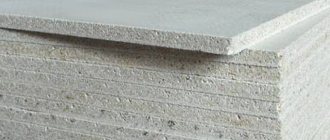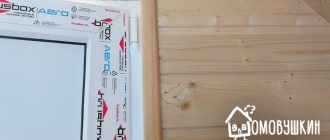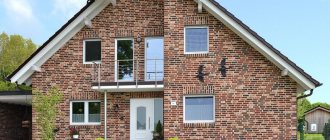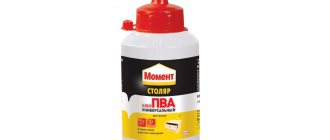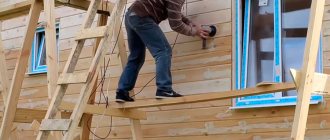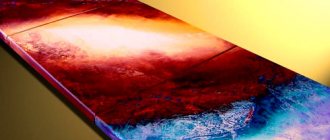In what form is it produced?
Silverstone can be found on sale in the following forms:
- A powder that must be mixed with a suitable paint and varnish composition before use.
- Ready-made mixtures that need to be stirred before use and, if necessary, diluted with a suitable solvent to the required painting consistency.
Ready-made dyes can be sold:
Read also: Why do companies need checkbooks?
- In cans or paint buckets.
- In cans. The aerosol form of release is very convenient to use and store, because aerosol paints last longer and no additional painting equipment is required when working with them. Acrylic or other water-based dyes are available in aerosol form.
As sales practice shows, people most often purchase powder formulations for making the necessary mixtures themselves and aerosol cans, often having different colors for decorating walls or painting small surfaces.
Areas of use
Despite its versatility, silver is most often used to create protection against corrosion. It is often used for painting:
- various metal structures for industrial purposes (power lines, pipelines);
- automotive industry products: both for tuning a car and for giving its individual parts additional strength;
- galvanized or metal roofs;
- hangars and other utility rooms made of metal (not only the roof, but also the walls are painted to protect against overheating during the hot season);
- structures in constant contact with fresh or sea water.
In addition, much less often, silver dye is used to protect and decorate buildings made of concrete, stone or wood; it is possible to use silver dye based on acrylic enamel for painting plastic products.
Application of silverfish
Serebryanka has become widespread both in the domestic and industrial spheres. It is used in everyday life to a greater extent, for decorative finishing of products. It is used to apply it to the fences of houses to make them look more attractive. Interior items made of wood or metal are coated with such a paint and varnish substance to make them look more organic. Even swimming pools are covered with this paint.
On an industrial scale, the use of this paint is due to the need to protect equipment and other objects from corrosion.
As you know, this paint and varnish substance covers metal products with a dense film, which performs a protective function.
Wash
During operation, paint may get on surrounding objects. To prevent this, you need to cover the surrounding surfaces with plastic film.
If paint gets on the floor or walls, it can be washed off in several ways:
- Place a few drops of sunflower oil on the painted area. Wait 10-15 minutes. Wipe the surface with any dry cloth.
- Buy nail polish remover without acetone. Apply it to the stain with a brush. Wait 5 minutes. The paint will become wet and cracks will appear. Wipe off the stain with a rag. Wash off any remaining nail polish remover with plenty of water.
When working with silverfish, you need to wear a work uniform, gloves, safety glasses, and a respirator. They will protect the respiratory tract, eyes and body from metal dust.
Silver paint has not lost popularity for several decades. This is due to its unique properties and low price. In order for the painted surface to maintain high strength and an attractive appearance, you need to take into account some nuances when preparing and applying the coloring composition.
Source
Despite the fact that the construction market is replenished with a new range of paint and varnish products every year, the use of silver paint does not lose its popularity and has been used by several generations of craftsmen. What is the secret of such popularity of silverfish? What qualities do such enamels have? Where are they most often used?
Types and form of release
On sale you can find two types of silverware, which differ in the production method and properties:
- Heat resistant paint. Finished products obtained by mixing bitumen varnish and aluminum powder. The coloring composition is resistant to high temperatures. The layer maintains its integrity when heated to 400°C.
- Classic silver. It is suitable for application to wooden and concrete surfaces. Does not withstand high temperatures. Not suitable for application to the surfaces of radiators and heating pipes.
Heat-resistant silver paint for metal is used for various purposes:
- painting batteries;
- painting metal pipes;
- protecting metal from overheating and moisture.
It is often used for painting metal household products. On sale you can find both ready-made formulations and powder in packages that need to be diluted.
Batteries painted silver (Photo: Instagram / kirti__store)
Compound
The main component of this paint is aluminum powder, which is obtained by crushing this metal. Thanks to this element in the composition, the painted surface receives a metallic color that resembles silver. It is worth noting that the paint itself does not contain silver.
Aluminum dust in the composition of this coating material comes in two types:
- PAP-1;
- PAP-2.
These powders differ in fractions. The first type consists of large particles, and the second of smaller ones. However, the quality of the surface obtained after painting does not depend on the degree of grinding.
If the paint is sold in an already diluted, ready-made form, then it differs in the type of varnish with which it is diluted. If the paint is intended to be used to protect surfaces exposed to high temperatures, then a special heat-resistant varnish is used to prepare it.
Release containers
Serebryanka is sold in different types, which makes it possible to purchase what is necessary in each specific case:
- Powdery. Before painting, it must be mixed with the dye or varnish used.
- Ready-made mixtures that can only be used after shaking them well (if they are too viscous, you can dilute them using a solvent).
As for ready-made coloring agents, they are sold:
- In buckets (sometimes these are jars).
- In aerosols. The compositions in cans are very convenient both to use and to store. Their shelf life, if all rules are followed, is much longer than their counterparts in other consistencies. When spray painting surfaces, you also do not need any tools, which greatly simplifies the process. The paint is applied in a thinner and even layer, which, among other things, increases its service life. If necessary, you can purchase water-based acrylic or alkyd paint compositions in cans.
Note: aluminum dyes in powder form or formulations in cans are more popular among consumers. They are presented in a wide range of colors, which helps you choose the most suitable shade without coloring yourself.
How to dilute silver powder for ideal surface coloring
Serebryanka is used as a protective layer of surfaces from the influence of negative environmental phenomena and from corrosion.
It easily withstands high and low temperatures and high humidity.
Serebryanka lays ideally evenly on the surface, but for this you need to know how to properly dilute silver grass powder and with what.
What is silver made of?
Judging by the name, the substance should contain silver, but it is not there at all. There is powdered metal dust obtained by grinding aluminum and its waste.
Silver powder
From this we can conclude that silver is crushed aluminum in powder form. And the name probably arose because the material has a steel, closer to silver, color.
Features of breeding silverfish
Two varieties of silver are produced, differing in production technology: PAP-1 and PAP-2. The powder is diluted with various substances in different proportions. PAP-1 is diluted with varnish BT-577 in a ratio of 2:5. This substance can easily withstand t-400 degrees without burning out. When making paint, a certain portion of varnish is poured into the powder and mixed with a mixer.
Any varnish is suitable for diluting PAP-2, ratio 1:3 or 1:4. The breeding principle is similar to the first type. But as a result of mixing, it is a very thick substance that is not suitable for coloring, so it needs to be diluted.
Silverfish are bred using synthetic drying oil, but not natural. The method is inexpensive, but after learning how long it takes for silver to dry on drying oil, many people refuse it. Drying takes a long time, three or more days.
Breeding silverfish for painting
To thin the paint, solvents (turpentine, solvent) or a mixture of them are used. It is possible to use synthetic drying oil with the same proportions and technology instead of varnishes. If you don’t have special solvents at hand, there is a way to dilute silver with gasoline. You need to dissolve the bitumen with gasoline, add silver and mix well.
Application of silverfish
Paint is used in many areas, both for industrial purposes and for household purposes. Application:
- batteries indoors
- various mechanisms in boiler rooms to protect against overheating
- parts that are used in production facilities
- in bridge construction
- for structures in ports and ships
- pipes for various purposes
Advantages and disadvantages
Serebryanka is very popular due to many advantages:
- It does not flake, although the paint layer is thin.
- Protects materials from the negative influences of the surrounding atmosphere.
- Used for various types of materials (cement, metal, wood).
- Long service life.
- Does not release toxins.
- Resistant to high and low temperatures.
- Dries quickly.
- Has a beautiful color. When using pigments, many shades are achieved.
The disadvantages of silver oxide include its explosiveness, so storage is provided in a dry place, in a tightly closed container, away from sources of fire. It is not recommended to keep silverfish near food, as its smell is quickly absorbed.
In addition, silver is not compatible with oil and alkyd substances. Also, it is not applied over nitro enamel and NBC, as it will peel off quickly.
Features of silver coating
Before painting with silver, the surface is well cleaned of former paint, lime, etc. If the surface is made of metal, it must be cleaned of rust and scale. If the previous layers cannot be removed, then you will simply have to prime the work surface.
When coating wood surfaces with silver, they must first be thoroughly sanded. Various tools are used for painting: sprayer, roller, brush. Paint is applied in 2-3 layers. You should paint very quickly, as the silver dries quickly and the layer may turn out uneven.
How to wash off paint
Sometimes when painting, paint gets onto other surfaces and dries, but it can be easily wiped off. To do this, you will need the solvent that was used to dilute the silverfish.
How to remove paint
When purchasing ready-made material and unknown composition, you can proceed as follows:
- Place a drop of sunflower oil on the stain and wait 10 minutes. Then wipe with a dry cloth.
- A liquid that is used to remove nail polish is applied to the spot, but without acetone. The product removes fresh paint perfectly. When the silverfish dissolves, the area is washed with water.
When using silver for coloring, you must adhere to safety precautions. You should work with gloves, avoid getting paint into your respiratory system, and the room should be ventilated.
How to paint with silver powder - on video:
Select it and press Ctrl+Enter to let us know.
Source: https://FoxRemont.com/dom/chem-razvesti-poroshok-serebryanki.html
Advantages and disadvantages
- Easy to apply. The silver paint is applied in a perfectly even layer, and no smudges form even when painting vertical surfaces;
- Versatility of use. As a rule, metal structures are painted with silver to protect against corrosion, but it can be used to paint almost any surface, for example, wood or concrete;
- Strength. A thin film forms on the treated surface, which does not peel off over time;
- Harmlessness. Aluminum powder does not emit toxic substances, so painting with silver is absolutely safe. Silverfish can only acquire properties harmful to human health if it is diluted with toxic enamel. If non-toxic paints and varnishes are used to prepare the composition, then it is quite possible to paint the internal walls of residential buildings;
- Aesthetic aspect. After the paint dries, the surface on which it is applied acquires a pleasant silver color, but if necessary, you can add color of any desired shade. This is easy to do, since a wide range of different colors are sold on the finishing materials market;
- Long service life. Painted surfaces do not require renewal for a period of 6-7 years, however, if the paint is applied to an object that is in constant contact with water, the service life will be up to three years, without loss of the original appearance or the appearance of cracks.
It is worth noting that, like any paint and varnish material, in addition to the advantages listed above, aluminum paint also has a number of disadvantages.
- First of all, this paint and varnish material should not be applied over other types of paintwork materials. Before painting with silver paint, it is imperative to clean the surface from any remnants of old paint. If you neglect this recommendation, the applied layer may crack, swell and not last even half of the period stated by the manufacturer.
- The second significant drawback is the increased risk of fire and even explosion of silverware in undiluted form. This factor must be taken into account when storing and preparing aluminum powder, therefore it is necessary to observe all precautions and safety measures when working with the material.
Pros and cons of silver
People have been using silver paint for more than a century, and during this time no one has had time to get tired of the paint. On the contrary, it is used more and more often for various needs. What is the secret of such popularity? It's all about the huge number of advantages it has:
- Silver does not flake and is quite durable and at the same time thin material. But at the same time, if you need to, you can easily get rid of the paint.
- The paint turns into a protective layer for the surfaces it is applied to. It creates a thin but even, smooth layer, fully displaying the surface texture.
- It is used on various materials - from wood to concrete and metal.
- Long service life, so the paint does not deteriorate in water for 3 years, nominally about 7 years, but in reality even longer.
- Not afraid of high temperatures.
- Invulnerable to corrosion.
- Non-toxic.
- Dries quickly.
- Painted in a pleasant silver color.
- With its help, you can achieve different shades of metal using pigments.
Of course, in addition to its advantages, this paint has its disadvantages, the main one of which is the risk of explosion. At what temperature can a metal fence be painted outside? Therefore, such powder should be stored in a dry place and in a tightly sealed container, away from possible sources of fire and direct sunlight.
You should not keep the paint near food, as the silverfish smell will quickly be absorbed.
It is also worth noting that the paint is incompatible with oil and alkyd paints. In addition, silver should not be applied on top of NBC and nitro-enamel paints, since in combination with such a coating the paint will not last long on the surface, will quickly come off and, possibly, swell with bubbles.
Metallic paint technology
Painting is carried out in a room with good ventilation. It is not recommended to begin applying aluminum paint without preparing the surface.
- Using sandpaper or a metal brush, rust and peeling old paint are removed from the metal. The wooden surface is also sanded. The coating of lime and chalk is removed from concrete and brick.
- The surface is primed to enhance the tenacity of silver, although it is already at a high level. It is enough to apply the primer once. This stage is a recommendation for concrete and brick. A primer is required if the old layer of paint cannot be removed from the surface. In addition, the number of paint layers is reduced.
- Poorly removed old paint can cause the silver to peel off.
- Apply a thin layer of paint 2-3 times to pre-dried walls. It is better to work with a roller or spray gun. If you work with a brush, then the actions must be quick. The paint hardens very quickly and the coating layer may not be even. Each subsequent layer is applied to the dried previous one. The time interval between application of layers is short.
Serebryanka dries completely in 4 hours, the setting speed is even faster. If there are defects in the work, then you need to have time to correct them before drying.
Watch the video to better reinforce the material:
Advice: to increase the service life of the protective and decorative layer of silver, it is recommended to cover it on top with the varnish that was used in the process of making the dye.
Random drops of silver are removed with a solvent. Damp drops can be easily removed by applying vegetable oil to them and wiping them off shortly. Nail polish remover is used for the same purposes.
Surface preparation and painting
Before proceeding with painting, it is necessary to carefully prepare the surface. Rust, remnants of old paint, and scale are removed from metal using abrasive paper or metal brushes (nozzles). Silver has good adhesion to objects being painted, but the effect will be better if you prime them once.
How to paint with silver? It is applied evenly over the entire surface in 2-3 thin layers. The wood is also sanded. It is especially important to remove remnants of other types of paint, otherwise the silver may peel off.
Concrete and brick surfaces are cleaned of lime and chalk. It is recommended to prime once, but if thoroughly cleaned, it can be applied without prior priming. The walls must be dry. Silver paint dries quite quickly (up to 4 hours), but sets faster. Therefore, it is better to correct defects when painting before it is completely dry.
To remove random stains from silverfish, use a solvent. If it is not completely dry yet, you can soak the stain in vegetable oil and then wipe it off.
Areas of use
Serebryanka is a universal paint, the composition of which can be applied to almost any type of substrate. But at the same time, it is most often used to paint planes made of metal or iron due to its anti-corrosion properties.
Mostly paint is used:
- For application to surfaces and structures in the industrial sector (e.g. pipelines).
- For painting cars or its individual elements.
- Serebryanka is suitable for application on galvanized and metal roofs.
- It can also be used to cover walls and metal bases in hangars, garages or other outbuildings (prevents overheating of surfaces in the summer).
- Suitable for use on foundations and structures that are operated in conditions of high humidity or are often in contact with water.
- Much less frequently, but still, surfaces made of concrete, stone and wood are coated with silver dye. It can also be used to paint plastic structures.
Cooking at home
In order to prepare silverware at home, you must first decide which surface to paint.
Options:
- metal heating surfaces are painted;
- paint equipment or objects at normal temperatures;
Heat-resistant enamel
To prepare heat-resistant silver, use PAP-1 powder and add BT-577 varnish or other recommended thermal varnish. You can use ready-made paint BT-177. You need to decide what you will use to paint the surface: brush, roller, spray gun. For brushes and rollers, a thicker consistency is required so that there are no smudges and the paint is evenly distributed.
It is better to do a few test strokes to decide if the thickness is sufficient. If necessary, make the composition less often by adding a solvent.
If you use a spray gun, you make thinner paint. Solvents are added to the finished BT-177: solvent, turpentine, white spirit in equal parts. For 1 portion of paint add 1 portion of solvent.
Subsequence:
- Wear protective equipment (clothing, respirator, goggles, gloves).
- Prepare a container for dilution and ingredients in the required proportions (powder and varnish).
- Powder and varnish are added in parts. Knead well until a homogeneous composition is obtained (the paint should have an oily consistency).
- Dilute the paint with solvent to the desired thickness. It is recommended to use a construction mixer for better mixing.
On video: making heat-resistant paint.
Serebryanka on drying oil
How to make silver for non-thermal surfaces? The composition is prepared in the same way as for thermal paint, but the only difference is that varnish or synthetic drying oil is used to dilute aluminum powder.
Let's sum it up
If during painting you dropped paint in the wrong place, but it has already dried, then do not worry that you will not be able to wipe it off. Silver can be easily wiped off with the solvent you used to thin the paint. If you purchased ready-made paint and do not have the slightest idea on what basis it was made, then some kind of folk remedies will help you:
- Drop a little sunflower oil onto the painted surface, wait 10 minutes, and then wipe the surface with a dry cloth.
- Apply nail polish remover that does not contain acetone to the stain. This product perfectly removes only fresh traces of paint. After dissolving the paint, the surface should be washed with plenty of water.
When using silverfish, you must follow basic safety precautions and personal protective equipment. Be sure to work with silver paint with gloves, in a ventilated area, and protect from paint getting into the respiratory tract. Apply the paint in several layers, allowing each layer to dry. Primed surfaces can be applied in one layer. When applying silver paint to a coating that does not have a clean surface, remember that you cannot paint nitro enamel, NBC and oil paints with silver paint.
Secrets of applying silver paint
There is nothing complicated about applying silver. In order to begin this process, you must first thoroughly clean the working surface from the previous layer of paint, metal, lime, etc. The metal surface should be cleaned of rust and scale. If you can’t remove layers of old paint, the surface can be primed.
If you are going to coat wooden materials with silver, you should first sand them thoroughly. For painting, you can use any tools that are more convenient for you to work with - a sprayer, a brush, a roller. Silver should be applied to the surface in two, or better yet, three layers. When choosing a brush as a tool for painting, you should remember that you need to be very dexterous and nimble, because if you hesitate even a little, the paint may have time to dry. As a result, everything will be painted unevenly.
Dilution of paint
Silver can be easily diluted with varnish. The thinner is heat-resistant varnish BT-577, which is intended for PAP1 powder. For PAP2, any varnish can be used. The order of dissolution of PAP1 is as follows:
- pour 2 parts of dry material into a container;
- add 5 parts of varnish;
- Mix the product well until you get a homogeneous mass.
Varnish BT-577 further increases the heat-resistant properties of silver, therefore it is recommended to use it if the paint will be applied to surfaces exposed to heat. In other cases, you can use PAP2. It needs to be diluted in a different proportion: take 3-4 parts of varnish for 1 part and mix well (about 5-7 minutes). If the portions of the product are large, it is better to use a construction mixer or drill with an appropriate attachment.
Silverfish can also be diluted with synthetic drying oil. The only downside is that the finished product will not have the heat resistance it does after adding varnish. Natural drying oil is not suitable; it will not provide sufficient uniformity of the paste. PAP1 is diluted with drying oil 2:5, PAP2 - 1:3 or 1:4.
Next, you can bring the paste to a state in which it is suitable for painting. You will need to dilute it with turpentine or solvent, as well as another organic solvent. The ratio with thinner depends on the paint application method.
If you decide to work with a roller, then you need 2 parts of paste to 1 part of solvent. For application with a brush and spray gun, the proportion is 1:1. To dilute ready-made store-bought paint that has thickened a little, use solvent 646 (up to 20% of the total paint volume). To change the color, special pigments can be introduced into silver.
Is it possible to make a silver coin with your own hands?
You can often be faced with the question of making your own dye at home. The answer is yes, it is quite possible.
To do this, you will need to take into account the following information:
- Powder grinding (PAP – 1 or PAP – 2). All information about the dilution method and proportions should be indicated on the container with the dye and experimentation in this case is not recommended. Because this will directly affect the final result.
- Staining technique. You also need to consider what tool the paint will be applied to the surface with (roller, brush, aerosol). If an aerosol is used, the solution must be made more liquid by mixing silver with water-based compounds. After drying, such surfaces not only look aesthetically pleasing, they are harmless, dry quickly, and also have a high level of strength.
- Silver should not be used if it is necessary to dilute nitro-enamel or oil-based dyes. They do not interact well with aluminum surfaces.
If a uniform consistency is required, then the mixing algorithm will be as follows:
- The required amount of powder is poured into a separate container.
- Next, you need to add paint to it and mix everything well until a thick consistency is formed.
- Afterwards, you need to gradually add paint to the existing mixture, stirring the solution.
Note: upon completion of mixing, you need to inspect the consistency and, if it is too thick, dilute it using a solvent. It must be remembered that if a spray can is used for painting, the mixture should be liquid, and vice versa - thicker if used with a roller or brush.
Methods for making aluminum dye
The difference between these two fractions of silverware lies in the degree of grinding of aluminum, therefore PAP-1 is distinguished by a slightly larger particle size. However, the degree of grinding does not affect the quality of surface painting .
Here, the method of diluting dry aluminum powder is much more important. To obtain the finished dye from it, various, mostly alkyd and acrylic varnishes, solvents and enamels are used.
If desired, in order to dilute it, you can use paint and varnish solvents with added ions. This dye is used when painting interior walls.
Both powders can be mixed with one of the types of varnish or diluted with synthetic drying oil. The main difference between PAP-1 and PAP-2 when preparing them is the proportion between powder and solvent:
- To dilute PAP-1, use BT-577 varnish in a ratio of 2 to 5. Paint prepared in this way can withstand heating up to 400 degrees Celsius and not fade. To mix, the varnish is poured in portions into aluminum powder poured into a container in advance.
- To prepare the PAP-2 fraction, proportions of 1 to 3 or 1 to 4 are used. It is diluted with drying oil or any known varnish, subject to thorough mixing. But you need to take into account that as a result of such mixing, the paint curls up, forming a rather thick mass that is unsuitable for use. Therefore, its further dilution is required to bring it to a state called painting consistency. The further degree of fluidity of the dye should be selected depending on the method in which it will be applied - with a roller, spray, brush and similar tools.
To thin the paint, use a mixture of two or more solvents such as white spirit, turpentine, solvent, or one of them. If you plan to spray silver, then the metal powder and solvent should be mixed in equal proportions, while for a roller and a paint brush a ratio of 2 to 1 is suitable.
If the paint is diluted with synthetic drying oil, then there are practically no fundamental differences from dilution with varnishes during its preparation. The same applies to maintaining proportional relationships.
As for the shelf life, for the metal powder itself it is practically unlimited, while the diluted composition can be stored for no more than six months.
Source
